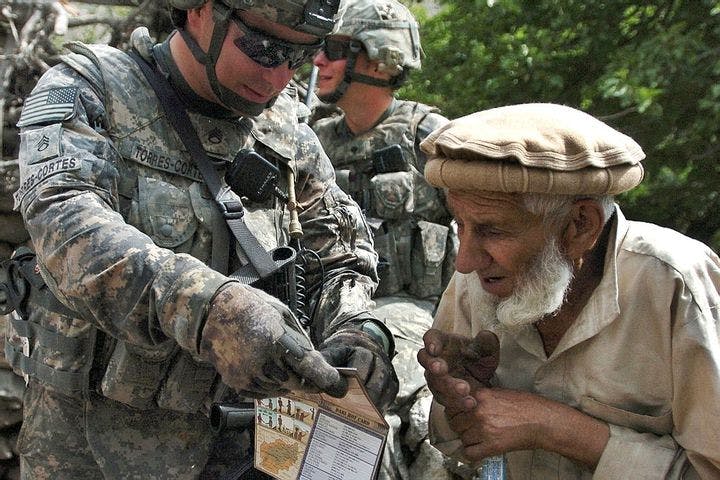Winter 2013
The surge in Afghanistan had some awful side-effects
– The Wilson Quarterly
The surge goes awry.
Imagine you’re a district governor in war-torn southern Afghanistan. A few years ago, nobody wanted your job. It was too dangerous; the Taliban lurked. In faraway Kabul, an unelected governing body widely seen as a tool of President Hamid Karzai appointed you anyway.
Then, in 2009, President Barack Obama announced a “surge” of money and troops to Afghanistan, with an emphasis on winning hearts and minds in hotly contested areas such as yours. American soldiers harried the Taliban. Eager American civilians bypassed the ministries in Kabul and brought you cash to build schools, repair roads, and clean irrigation canals. You, an unelected political lightweight, suddenly became a very powerful local king.
Welcome to the wild world of post-surge Afghanistan.
The United States sought quick gains in security and development at the local level, so it poured money into the most contentious of the country’s 399 districts, explains Frances Z. Brown, a fellow at the Council on Foreign Relations and the U.S. Institute of Peace. In Nawa, in the southern province of Helmand, American aid generated jobs for more than half of the men in the district and totaled $300 annually per person, a sum equal to almost a third of Afghanistan’s per capita gross domestic product.
The bonanza bred fundamental problems, however. “District governors became the primary distributors, and thus, the primary political beneficiaries, of an enormously effective new patronage system,” Brown recounts. This occurred while central government ministries, which have historically played a key role in Afghan governance, received less attention.
A reckoning awaits in 2014, when the U.S. military will withdraw and the governors’ power to distribute jobs and other favors will consequently recede. The central ministries’ abilities to secure and manage the provinces “have not measurably improved and in some respects have atrophied as the action moved away from them,” Brown says. At the same time, all that American aid has inflated the population’s expectations.
The surge has not been totally without benefits, Brown allows. It “enabled district governors rather than insurgents to be the men the population viewed as their problem solvers.” Some district governors ably served their constituents.
But empowering them has had perverse effects. The governors are stronger, but governance is not. And the system is not democratic. The governors bend to the will of their bosses in Kabul and to the Americans who provide aid and security. They are less inclined to listen to the people in their district.
Directly elected district councils were supposed to make district governors more accountable to their constituents. President Karzai had other plans. “Year after year,” Brown writes, “a host of logistical and political hurdles, mostly emanating from the vicinity of the Presidential Palace, postponed the election of these councils.” The United States and its allies set up sundry interim councils, but these did little more than sow confusion and frustration.
Showering far-flung district governors with aid may yield fast results, but it is no way to build a lasting government, Brown observes. As 2014 approaches, she argues, America should instead focus on bolstering the ministries and other government institutions both in Kabul and Afghanistan’s 34 provinces. “The United States must, at last, truly cultivate durable Afghan government systems rather than a series of tactical-level workarounds.”
THE SOURCE: “Bureaucracy Does Its Thing, Again” by Frances Z. Brown. The American Interest, Nov.–Dec. 2012.
Photo courtesy of Wikimedia Commons
Up next in this issue
